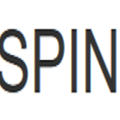In order to tackle the challenge of unfavorable weather conditions such as rain and snow, radar is being revisited as a parallel sensing modality to vision and lidar. Recent works have made tremendous progress in applying spinning radar to odometry and place recognition. However, these works have so far ignored the impact of motion distortion and Doppler effects on spinning-radar-based navigation, which may be significant in the self-driving car domain where speeds can be high. In this work, we demonstrate the effect of these distortions on radar odometry using the Oxford Radar RobotCar Dataset and metric localization using our own data-taking platform. We revisit a lightweight estimator that can recover the motion between a pair of radar scans while accounting for both effects. Our conclusion is that both motion distortion and the Doppler effect are significant in different aspects of spinning radar navigation, with the former more prominent than the latter. Code for this project can be found at: https://github.com/keenan-burnett/yeti_radar_odometry
翻译:为了应对雨水和雪等恶劣天气条件的挑战,雷达正在作为视觉和激光雷达的平行感测方式被重新审视。最近的工作在将旋转雷达应用于odology和地点识别方面取得了巨大进展。然而,迄今为止,这些工程忽视了运动扭曲和多普勒对旋转雷达导航的影响,这在汽车自驾驶领域可能很重要,因为速度可能很高。在这项工作中,我们展示了这些扭曲对利用牛津雷达机器人汽车数据集和使用我们自己的数据采集平台进行测量的雷达odorization的影响。我们重新审视了能够恢复双对雷达扫描之间运动的轻量估测器,同时对这两种影响进行核算。我们的结论是,运动扭曲和多普勒效应在旋转雷达导航的不同方面都具有重大意义,前者比后者更为突出。这个项目的代码见于:https://github.com/keenan-burnett/yeti_radar_odoraphy。我们的结论是,运动扭曲和多普勒效应在旋转雷达导航的不同方面都很重要。




